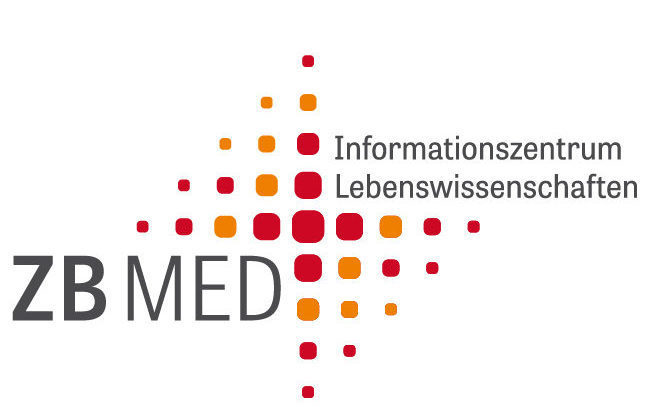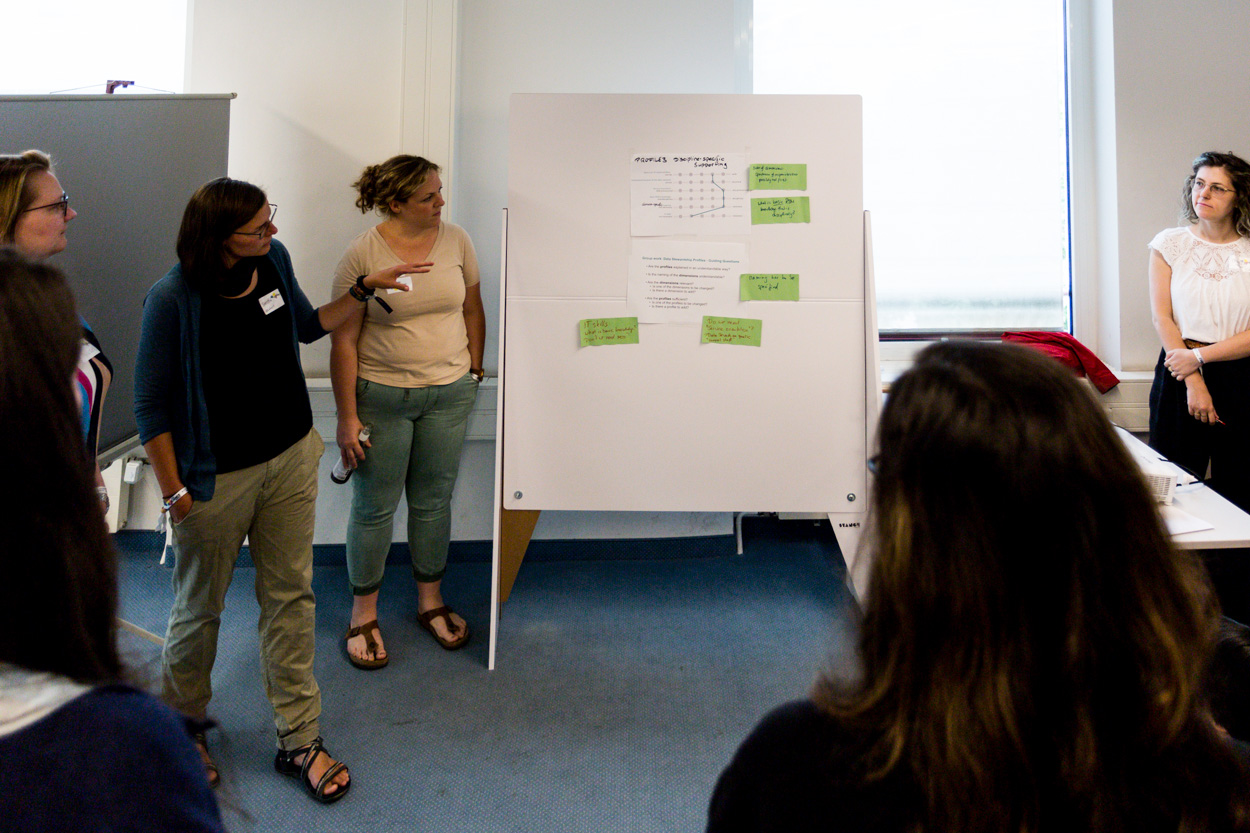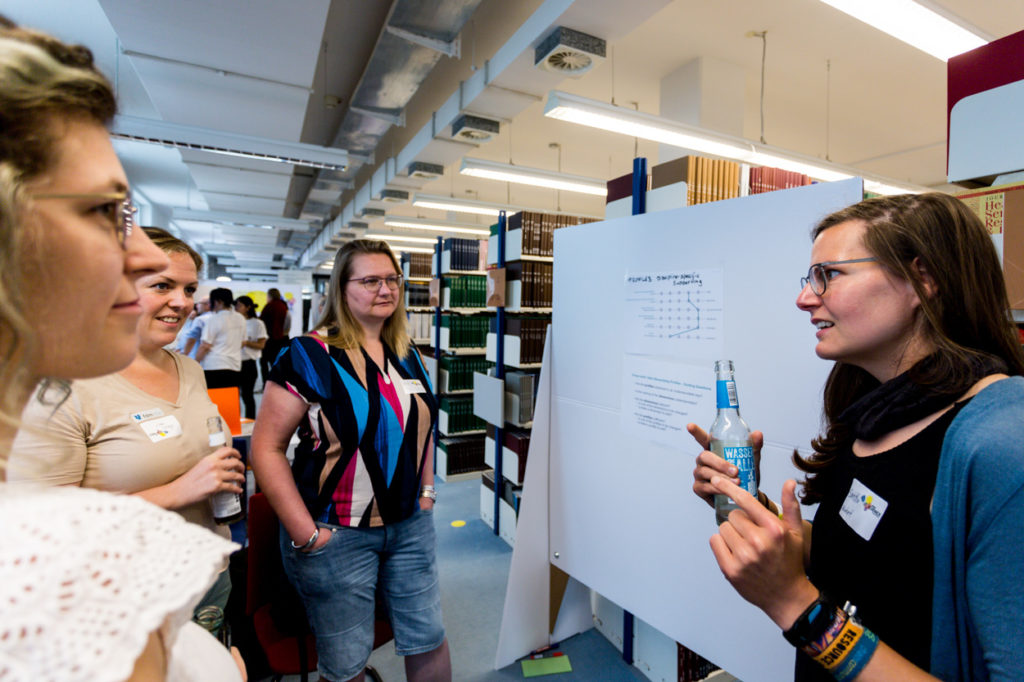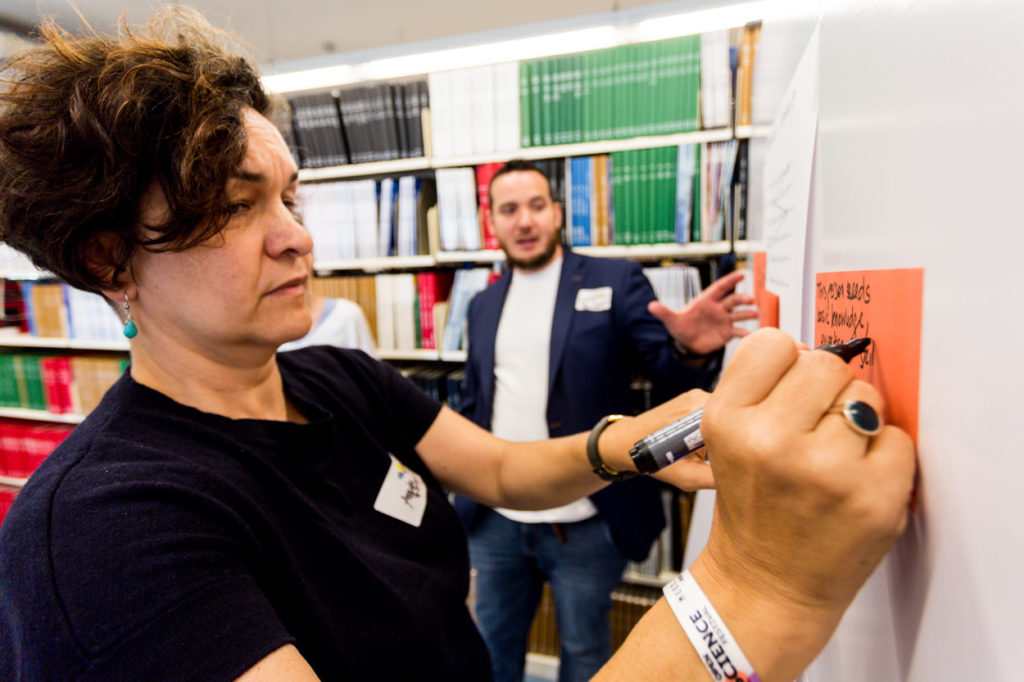Authors: Jens Dierkes (USB Köln), Yvana Glasenapp (Leibniz University Hannover), Tereza Kalová (University of Vienna), Birte Lindstädt (ZB MED)
This workshop was organized by two of the authors of the project report „Supporting Research: Recommendations for Data Stewardship at Academic Research Institutions“, namely Birte Lindstädt and Jens Dierkes. They were supported by two data stewardship enthusiasts, Tereza Kalová and Yvana Glasenapp.
To get to know the participants, Tereza invited everyone to position themselves on a scale from an embedded data steward to a senior management position in their organization in the room. Interestingly, the roughly 20 attendees of the workshop were quite evenly spread between the two poles.
Introducing The DataStew Project
The concept of data stewardship as a support for researchers, but also as a field of research itself, is becoming increasingly important due to the overall growth in digital data volumes. Qualified employees are needed in (inter-)national data-infrastructure initiatives such as the European Open Science Cloud (EOSC) as well as the National Research Data Infrastructure (NFDI) in the German context as a national example. Also the requirements of research funders often prescribe professional data management. The demand for qualified personnel is high and will probably continue to grow.
Although the term „data steward“ is frequently and widely used, the tasks, roles or institutional embedding of data stewards remain ambiguous and are still not clearly defined. In other European countries, studies e.g. in the Netherlands and Denmark have already identified somewhat congruent profiles of data stewards.
The DataStew project deals with the German academic landscape with regard to data stewardship. On the one hand, the situation and needs analysis was carried out based on the relevant literature and job advertisements as well as qualitative interviews. Furthermore, the project shows the results of focus group discussions held with different stakeholders to derive recommendations for action.
The central finding is that there is no universal way to implement data stewardship. Instead, the implementation of data stewardship is highly depending on the local environment. The project proposes a change of perspective, describing different models of data stewardship based on the capacities and needs of the institution. Specific teams of data stewards can be assembled in a modular system. Five data steward profiles are available for building data steward teams, based on six dimensions:
- the size of the research institution,
- the institutional location,
- basic knowledge of research data management,
- the need for specialised knowledge,
- the breadth of the range of tasks, and
- the need for service orientation as opposed to scientific, research activities.
Based on different combinations of these criteria, five profiles of data stewards are described, e.g. the data steward as a generalist at a service point in a small research institute with a wide range of tasks. As a counterpart to this, the scientific working data steward in a collaborative project with specific expertise who works closely with the researchers on a research question has emerged. Furthermore, one project result is a decision tree helping insitutions to figure out which data steward profiles fit into the given requirements and structures.
In addition to proposing a modular system of data steward profiles, the report identifies the need for further research into the quantitative demand for specific profiles. Based on this, appropriate training capacity can be built in line with the specific demand for data management experts.
Group Work: Data Stewardship Profiles
Our goal was to find out if the five data steward profiles outlined in the report reflect the reality of data stewards in academic institutions. Participants could choose a profile they were most interested in and discuss the following questions:
- Are the profiles explained in an understandable way?
- Is the naming of the dimensions understandable?
- Are the dimensions relevant?
– Is one of the dimensions to be changed?
– Is there a dimension to add? - Are the profiles sufficient?
– Is one of the profiles to be changed?
– Is there a profile to add?
Group Work: Data Stewardship Models
After a short break, everyone gathered their remaining energy to work through the data stewardship decision tree. The three groups began by collecting key facts about their chosen research institution – real or fictional. Then, they used the decision tree to see if they could pin down which of the seven data stewardship models would meet the needs of their institution best. One group did not choose to work with an institution, but collected general remarks on the decision tree and its possible applications. The other two groups had a closer look at Oldenburg University and the fictional „Hogwarts University“.
Learnings and Outlook
This workshop was our first opportunity to discuss the findings of the DataStew project with a broader audience and gather feedback. Currently (September 2023), the report is only available in German. During the discussion of the profiles, some of the participants raised concerns about the ambiguous naming of the dimensions in the English translation presented at the workshop. As these issues are clarified in the German version, a key takeaway from the workshop is translating the report with a focus on more precise terminology.
With regard to the data steward profiles, the participants overall agreed on the need for the five distinct profiles. There were some interesting suggestions to change the order of the dimensions and to move points on the scale of the dimensions to better describe the profiles.
It seems that IT skills in particular need to be better specified, as it was found that many participants consider IT skills to be relevant skills in many profiles. For the profile ‚Infrastructure‘ it should also be clarified what is meant by the term ‚infrastructure‘. Policy development and teaching dimensions could also be added to the profiles. These are currently included in the ’spectrum of responsibilities‘. It was also questioned whether the ’spectrum service orientation‘ was really necessary, as data stewards could generally be seen as support staff.
We also had a discussion about how useful the decision tree can be for setting up a data stewardship program. Since the tree can be applied for institutions of all shapes and sizes, the resulting models do not give us specific numbers for the data stewards which would be needed to fulfill all the tasks. It could be heplful to offer more examples of how many data stewards of the various profiles should be hired. A general comment from the group was that the visualisation of the decision tree could be improved to make it easier to make a decision.
Further Information
- The presentation slides and documentation of the group work can be found here.
- Contact for comments and further information: dini-datasteward@uni-koeln.de
- About the DataStew project
DOI (Digitalaugabe): https://doi.org/10.48664/fq7a-s206






Pingback: Open Science Festival 2023 – ZB MED-Blog